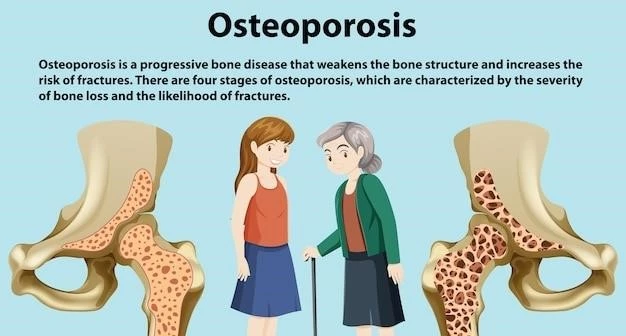Overview of Chondrodysplasia Punctata, Sheffield Type
Definition and Introduction
Chondrodysplasia Punctata, Sheffield Type, is a rare genetic disorder characterized by skeletal abnormalities and developmental delays. It is caused by mutations in the PEX7 gene, affecting the metabolism of fats in the body. This condition leads to specific features such as rhizomelic shortening of limbs and punctate calcifications in cartilage. Early diagnosis and multidisciplinary management are essential for individuals affected by this condition.
Causes of Chondrodysplasia Punctata, Sheffield Type
Genetic Mutation
Chondrodysplasia Punctata, Sheffield Type is primarily caused by mutations in the PEX7 gene٫ which plays a crucial role in peroxisome biogenesis. These mutations disrupt the normal function of peroxisomes٫ leading to the characteristic features of this disorder. The inheritance pattern is autosomal recessive٫ meaning that an affected individual has inherited two copies of the mutated gene٫ one from each parent.
Symptoms and Diagnosis of Chondrodysplasia Punctata, Sheffield Type
Symptoms
Individuals with Chondrodysplasia Punctata, Sheffield Type may present with rhizomelic limb shortening, cataracts, characteristic facial features, intellectual disability, and seizures. Other symptoms include skeletal abnormalities, growth retardation, and respiratory difficulties. The presence of punctate calcifications in cartilage is a key diagnostic feature. Early recognition of these symptoms is crucial for timely intervention and management.
Diagnosis
Diagnosing Chondrodysplasia Punctata, Sheffield Type involves a combination of clinical evaluation, radiographic imaging, and genetic testing. Radiographs typically reveal punctate calcifications in the epiphyses of long bones. Genetic testing can confirm mutations in the PEX7 gene. Additionally, ophthalmologic examinations may identify cataracts, enhancing the diagnostic process. A prompt and accurate diagnosis is essential for appropriate treatment planning and management.
Treatment Options for Chondrodysplasia Punctata, Sheffield Type
Medical Management
Medical management for Chondrodysplasia Punctata, Sheffield Type focuses on symptom-specific interventions. This may include orthopedic interventions for limb abnormalities, ophthalmologic care for cataracts, and developmental support for intellectual disability. Seizures, if present, require appropriate anticonvulsant therapy. Regular monitoring by a multidisciplinary team is essential to address the complex needs of individuals affected by this rare genetic disorder.
Prognosis and Life Expectancy of Chondrodysplasia Punctata, Sheffield Type
Prognosis
The prognosis for Chondrodysplasia Punctata, Sheffield Type varies depending on the severity of symptoms and associated complications. Individuals with milder forms may have a better prognosis with appropriate medical management. However, severe cases can lead to significant developmental delays and potential health issues affecting life expectancy. Regular monitoring and early intervention can positively impact the prognosis for those affected by this rare genetic disorder.
Life Expectancy
The life expectancy of individuals with Chondrodysplasia Punctata, Sheffield Type can vary significantly. Factors such as the severity of skeletal abnormalities, respiratory complications, and neurological issues can impact life expectancy. Early detection, comprehensive medical care, and ongoing support can improve outcomes and potentially enhance life expectancy for those affected by this complex genetic condition.

Research Advances in Chondrodysplasia Punctata, Sheffield Type
Current Studies and Breakthroughs
Ongoing research on Chondrodysplasia Punctata, Sheffield Type focuses on understanding the underlying genetic mechanisms and exploring potential therapeutic interventions. Recent breakthroughs include advancements in gene therapy and targeted treatments to address specific manifestations of the condition. Collaborative efforts among researchers and healthcare professionals aim to enhance knowledge, improve diagnostic techniques, and ultimately advance the care and outcomes for individuals affected by this rare genetic disorder.
Supportive Care for Individuals with Chondrodysplasia Punctata, Sheffield Type
Multidisciplinary Approach
Supportive care for individuals with Chondrodysplasia Punctata, Sheffield Type requires a collaborative multidisciplinary team. Specialists from various fields such as genetics, pediatrics, orthopedics, ophthalmology, and rehabilitation work together to provide comprehensive care tailored to the unique needs of each individual. This holistic approach ensures that medical, developmental, and quality-of-life aspects are addressed effectively, enhancing the overall well-being of those affected by this rare genetic disorder.
Genetic Counseling for Chondrodysplasia Punctata, Sheffield Type
Family Planning and Risk Assessment
Genetic counseling for Chondrodysplasia Punctata, Sheffield Type involves family planning guidance and risk assessment. Counseling helps families understand the inheritance pattern of the condition, assess the likelihood of recurrence, and explore options for prenatal testing or preimplantation genetic diagnosis. Empowering families with accurate information supports informed decisions and assists in navigating the complexities of managing genetic risk factors within the family.
